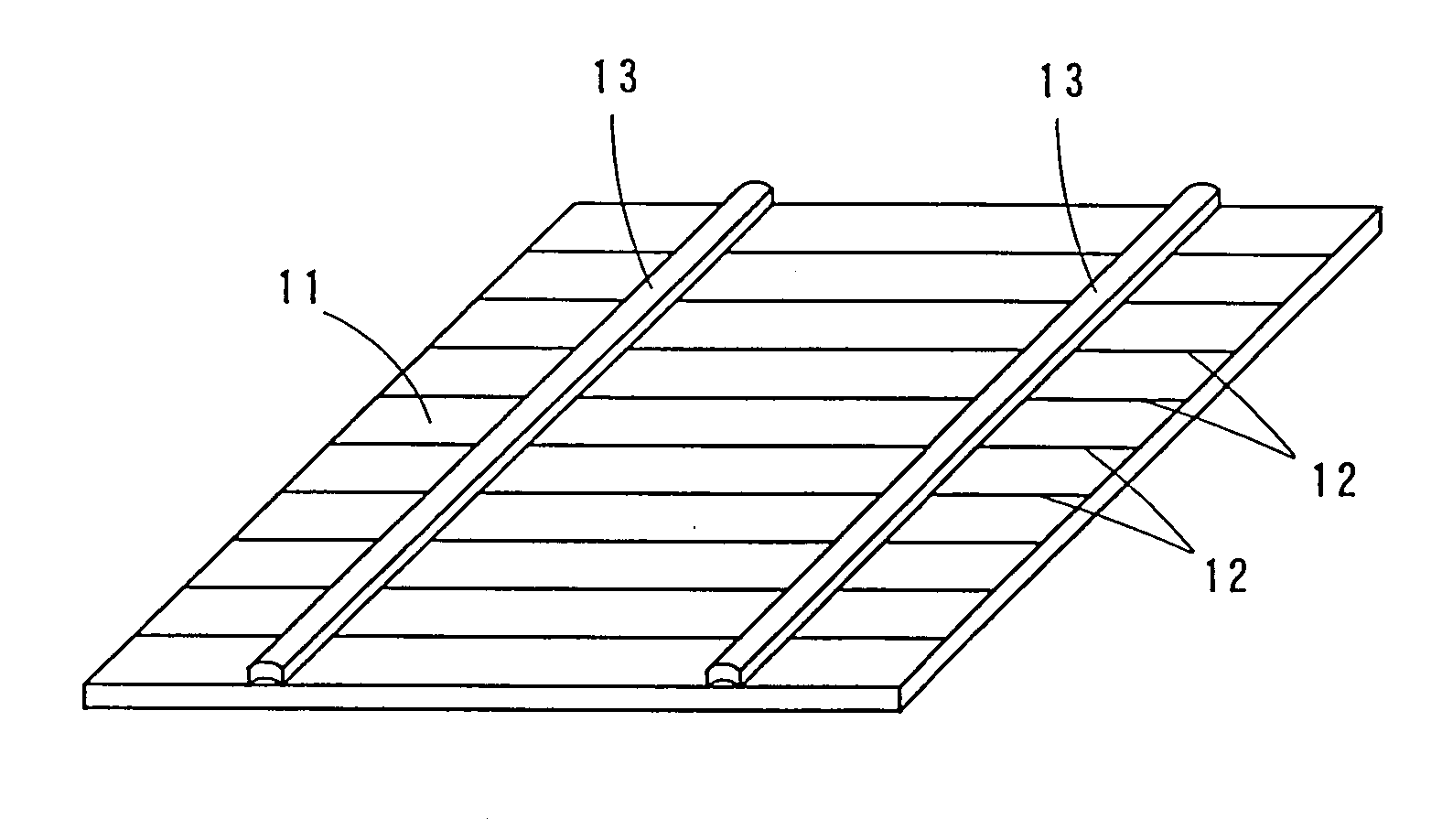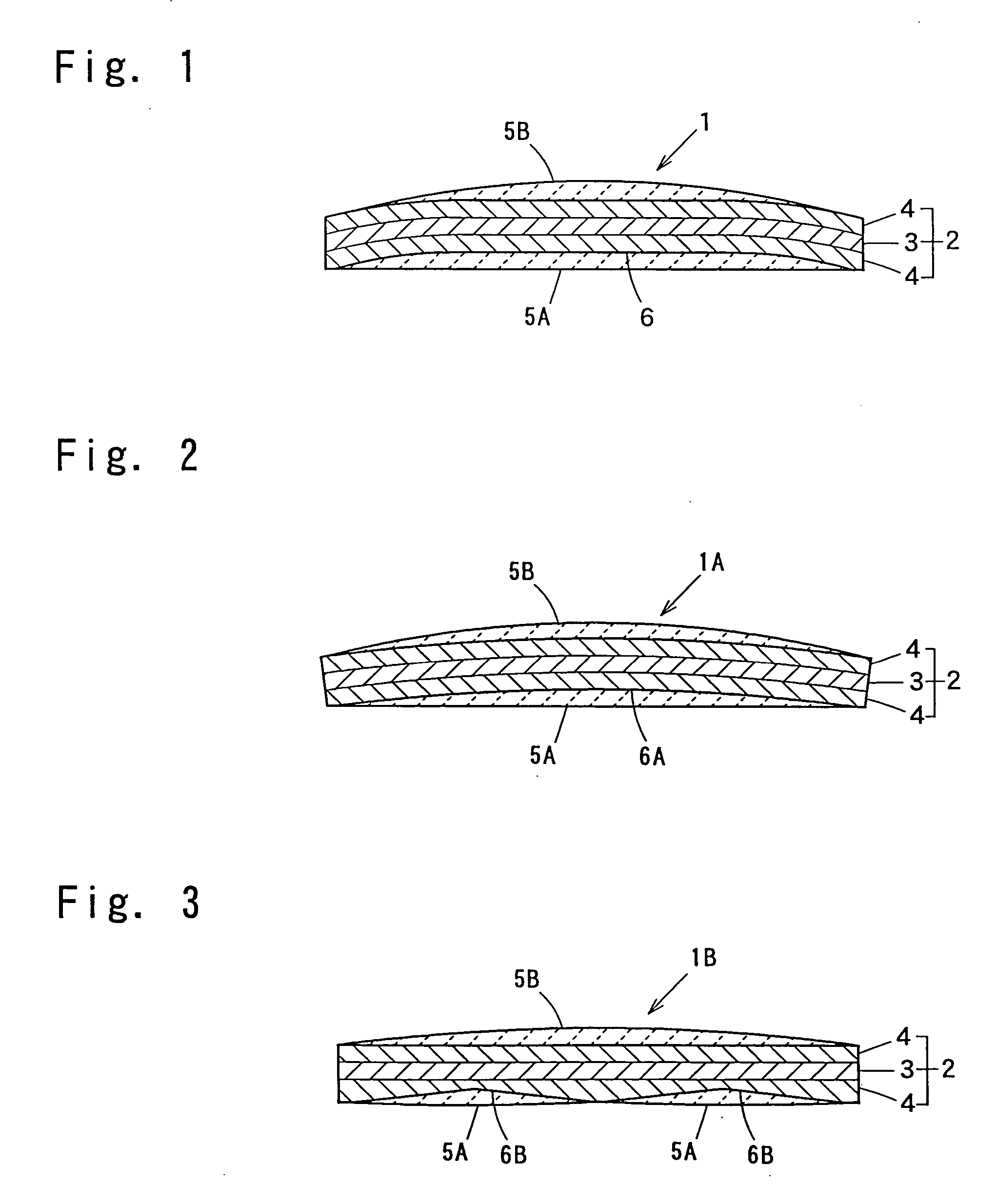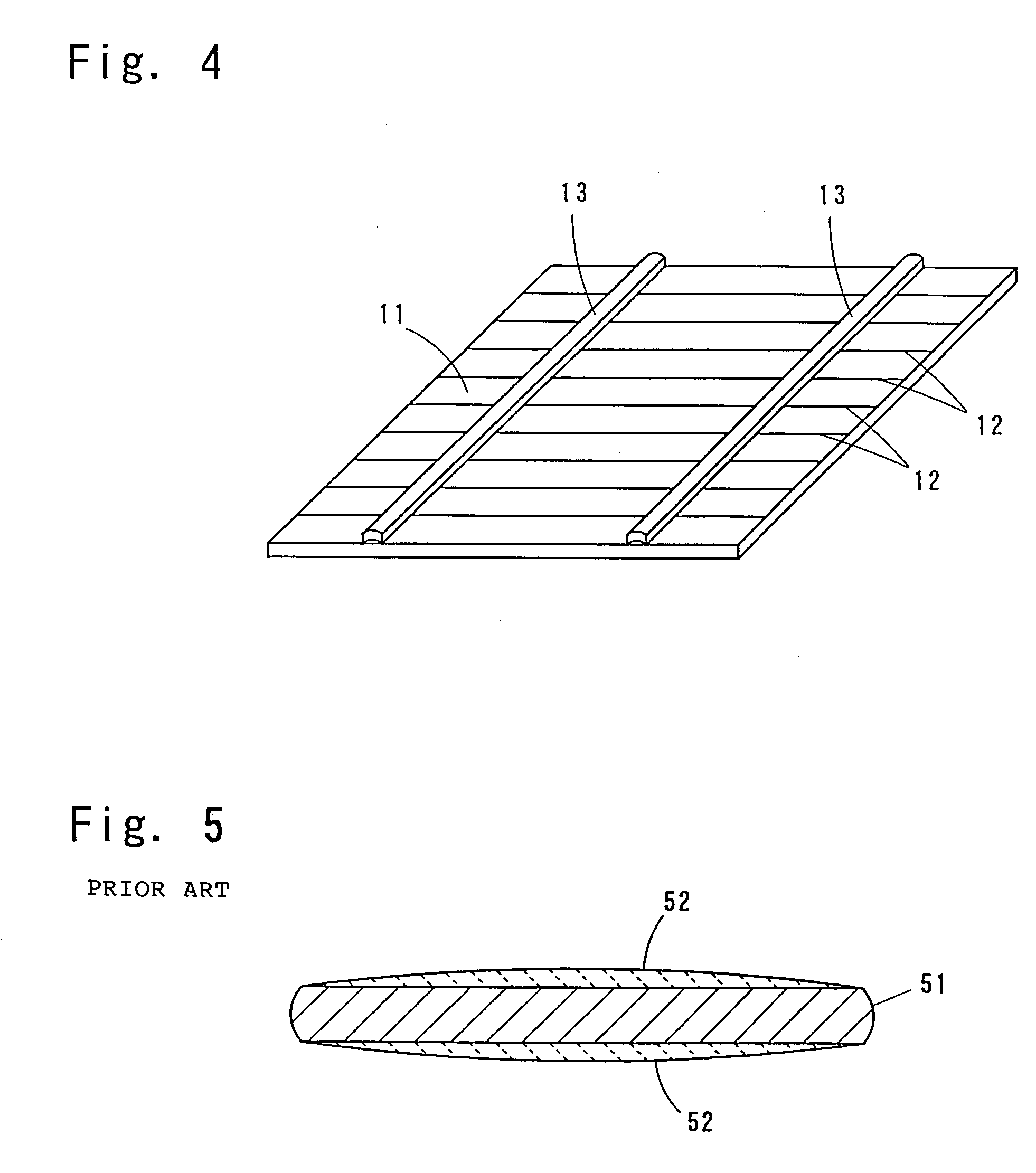Electrode wire material and solar cell having connection lead wire formed of the wire material
a technology of electrode wire and lead wire, which is applied in the direction of manufacturing tools, welding/cutting media/materials, and manufacturing tools, etc., can solve the problems of connection lead wire, soldering failure, and easy insufficient heat transmission from the semiconductor substrate side to the hot-dip solder plated layer, etc., to improve the bonding durability of the electrode wire material, improve the solderability of the soldered part formed, and facilitate flattening
- Summary
- Abstract
- Description
- Claims
- Application Information
AI Technical Summary
Benefits of technology
Problems solved by technology
Method used
Image
Examples
examples
[0039] A clad material (0.18 mm thick) comprising a middle layer with a thickness of 60 μm composed of Invar (Fe-36.5 mass % Ni) and copper layers with each thickness of 60 μm formed on both faces of the interlayer was prepared. Strip-like materials with each width of 2 mm were produced from the clad material by a slitter and the strip-like materials were further cut into pieces with each length of 40 mm to obtain core materials related to examples. When slitting by the slitter, the intervals of rotary blades were adjusted so as to carry out bending forming in the end parts in the width direction of the each strip-like material to make the transverse cross sectional shape of the core material dish-like as shown in FIG. 1. The cross-sectional shape was observed by an optical microscope (magnification about 200 times) to find that the deepest depth in the recessed part formed in the recessed side of the core material was about 20 μm and the opening width of the recessed part was about...
PUM
| Property | Measurement | Unit |
|---|---|---|
| melting point | aaaaa | aaaaa |
| melting point | aaaaa | aaaaa |
| width | aaaaa | aaaaa |
Abstract
Description
Claims
Application Information
 Login to View More
Login to View More - R&D
- Intellectual Property
- Life Sciences
- Materials
- Tech Scout
- Unparalleled Data Quality
- Higher Quality Content
- 60% Fewer Hallucinations
Browse by: Latest US Patents, China's latest patents, Technical Efficacy Thesaurus, Application Domain, Technology Topic, Popular Technical Reports.
© 2025 PatSnap. All rights reserved.Legal|Privacy policy|Modern Slavery Act Transparency Statement|Sitemap|About US| Contact US: help@patsnap.com



